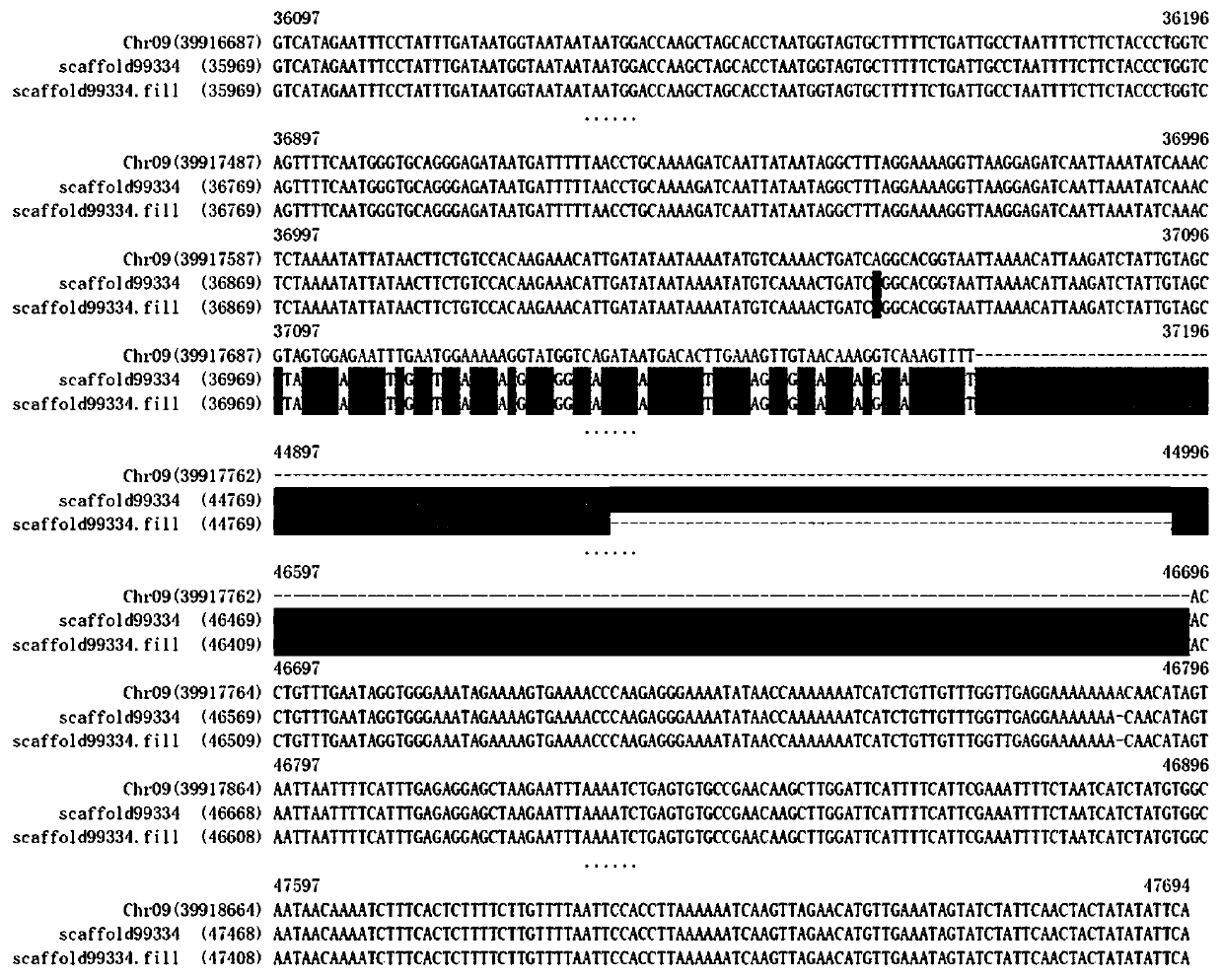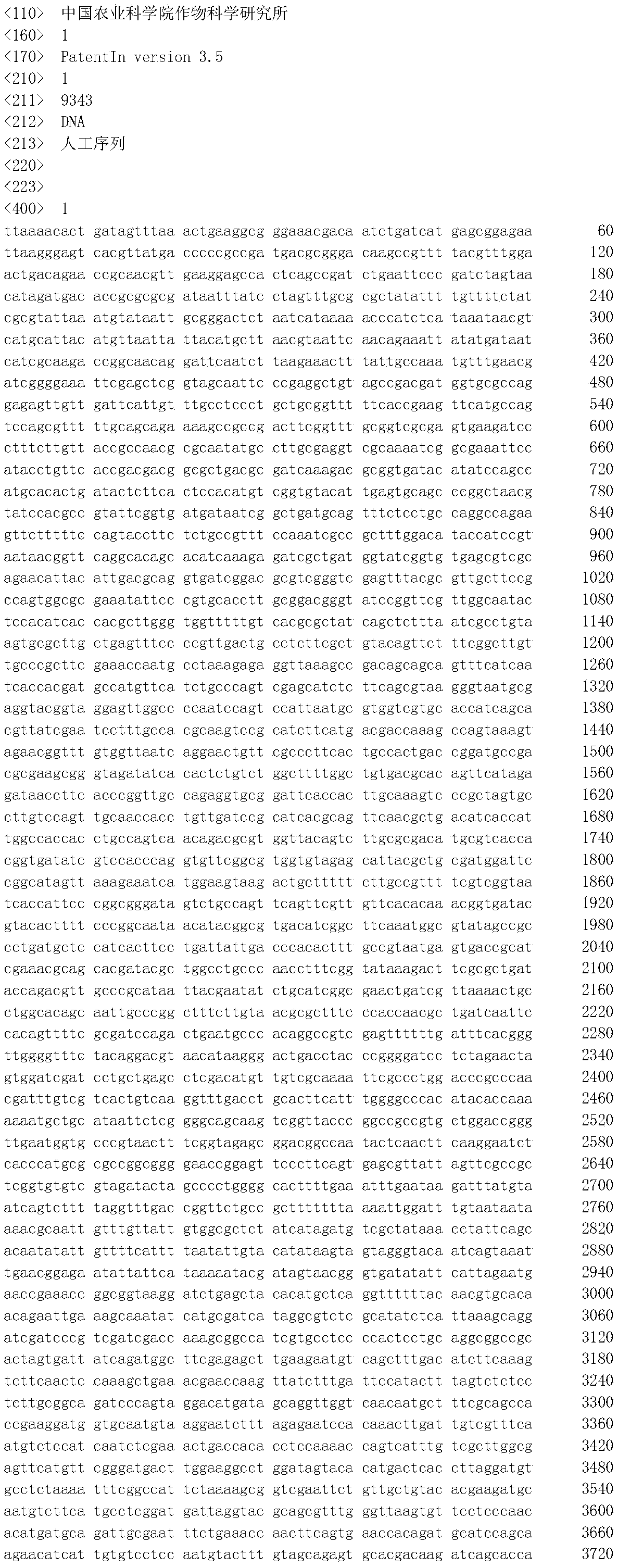Method for determining the sequence, insertion position and marginal sequence of exogenous dna fragments in transgenic organisms
A technology of insertion position and transgene, applied in biochemical equipment and methods, biochemical cleaning devices, microbial measurement/inspection, etc., can solve the problems of low efficiency and achieve the effect of rapid and accurate detection
- Summary
- Abstract
- Description
- Claims
- Application Information
AI Technical Summary
Problems solved by technology
Method used
Image
Examples
Embodiment 1
[0071] Example 1, Determination of the sequence, insertion position and marginal sequence of the exogenous DNA fragment in AtDCGS high methionine soybean
[0072] 1. Preparation of AtDCGS high methionine soybean CGS-ZG11
[0073] Using the carrier pGPTV-Bar-DCGS, the AtD-CGS (also known as AtDCGS) gene was transformed into the soybean variety Zigong Dongdou through the Agrobacterium-mediated transgenic method, and the AtD-CGS high methionine soybean CGS-ZG11 (transformed AtD -CGS high methionine transgenic soybean lines (Han Qingmei et al., Identification and Genetic Stability Analysis of High Methionine Transgenic Soybean, Chinese Journal of Oil Crops, 2015, 37(6):789-796)).
[0074] 2. Determination of the sequence, insertion position and marginal sequence of the exogenous DNA fragment in AtD-CGS high methionine soybean CGS-ZG11
[0075] 1. Preparation of genomic DNA samples of AtD-CGS high methionine soybean CGS-ZG11
[0076] Genomic DNA of CGS-ZG11 transgenic AtD-CGS hig...
PUM
 Login to View More
Login to View More Abstract
Description
Claims
Application Information
 Login to View More
Login to View More - Generate Ideas
- Intellectual Property
- Life Sciences
- Materials
- Tech Scout
- Unparalleled Data Quality
- Higher Quality Content
- 60% Fewer Hallucinations
Browse by: Latest US Patents, China's latest patents, Technical Efficacy Thesaurus, Application Domain, Technology Topic, Popular Technical Reports.
© 2025 PatSnap. All rights reserved.Legal|Privacy policy|Modern Slavery Act Transparency Statement|Sitemap|About US| Contact US: help@patsnap.com



